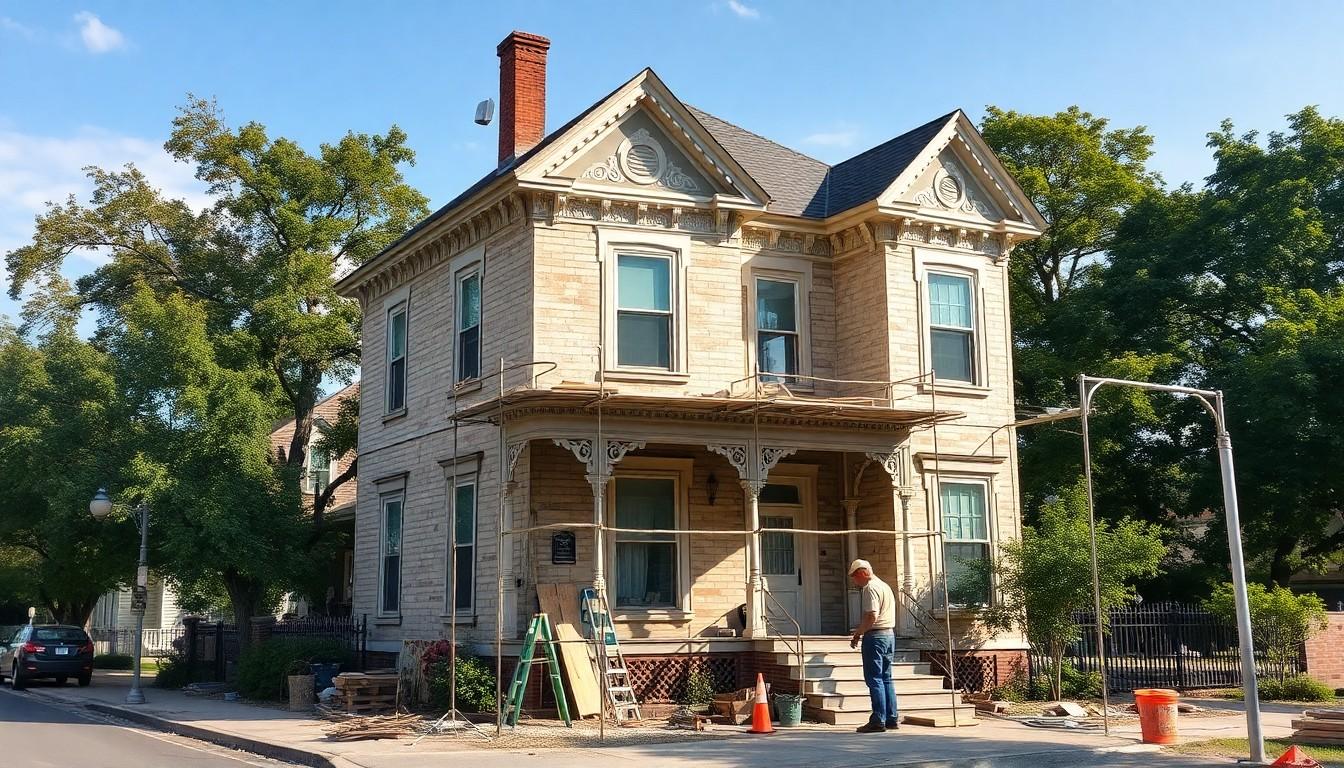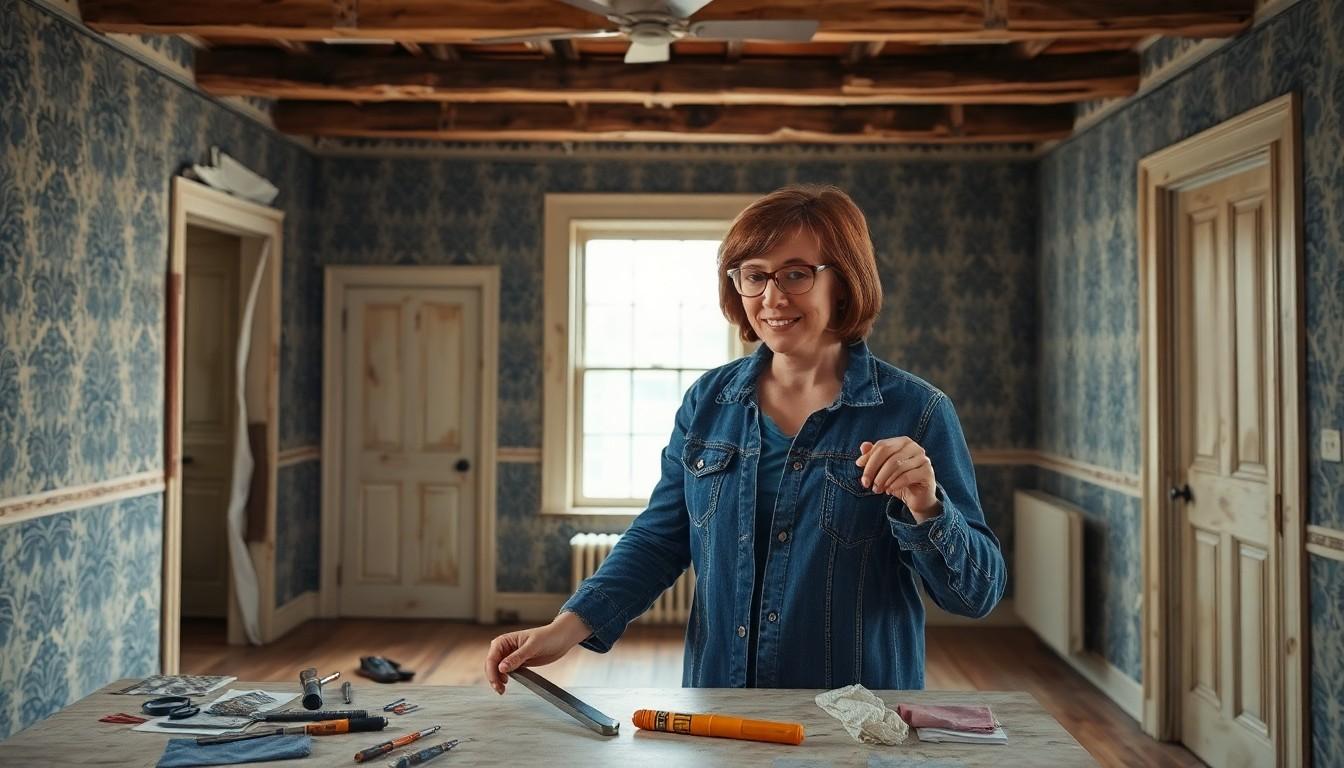Renovating a historical home isn’t just a project; it’s a thrilling journey through time. Imagine peeling back layers of wallpaper to reveal a century-old treasure or discovering hidden nooks that whisper stories of the past. It’s like being a detective in your own home, armed with a toolbox instead of a magnifying glass.
Understanding Historical Home Renovation
Historical home renovation involves a blend of art, science, and respect for the past. This process seeks to honor the original architecture while adapting the home for modern living.
Importance of Preservation
Preservation plays a critical role in maintaining cultural heritage. It ensures that unique architectural features remain intact. Historic homes often reflect local history, providing insight into earlier times and lifestyles. By renovating with care, one can retain the character that defines these homes. This effort benefits communities, fostering pride in local history and attracting tourism. Preservationists advocate for sustainable practices, emphasizing the value of reusing original materials. Such practices reduce waste and contribute to environmental conservation. Overall, preserving historical homes safeguards stories and traditions for future generations.
Common Challenges Faced
Renovating historical homes poses several challenges. One major obstacle involves adhering to local regulations, which often impose strict guidelines on modifications. Finding skilled craftsmen familiar with traditional techniques can be difficult. Original materials may be hard to source, leading to unexpected delays and costs. Homeowners may encounter structural issues that require significant repairs. Additionally, updating amenities while maintaining historical integrity can create tension between modern needs and preservation goals. Time constraints often add pressure, as renovations can extend longer than anticipated. Understanding these challenges helps prepare homeowners for the complexities of their renovation journey.
Key Considerations in Renovation

Renovating a historical home involves several key considerations that ensure a respectful and successful project. Homeowners must prioritize elements that honor the past while meeting modern needs.
Researching Historical Accuracy
Understanding the original design elements proves essential. Homeowners benefit from studying architectural styles relevant to their property. This research reveals authentic materials and color palettes, fostering historical accuracy. Collecting vintage photographs and documents can provide valuable insights into the home’s history. Engaging with local historical societies often unveils expert resources. Consultation with preservation specialists supports informed decision-making, ensuring renovations align with historical standards.
Adhering to Local Regulations
Local regulations often dictate specific guidelines for historic buildings. Homeowners must investigate zoning laws and preservation ordinances before starting any work. Building permits usually require approval based on compliance with these regulations. Communicating with local planning departments clarifies restrictions and requirements. Understanding the process enables homeowners to avoid costly delays. Engaging experienced contractors familiar with historic renovations helps navigate these legal complexities. Awareness of potential tax benefits related to restoration also presents financial advantages.
Popular Styles and Techniques
Historical home renovations often embrace a variety of stylistic interpretations. Each style carries its unique attributes, guiding homeowners in preserving cultural essence.
Victorian Renovations
Victorian renovations highlight elaborate ornamentation and rich colors. Common features include decorative arches, intricate moldings, and vibrant wallpapers. Restoring these homes requires attention to detail to match the original craftsmanship. Homeowners often seek out reproduction materials for authenticity. Window treatments like lace curtains maintain the period’s charm. Engaging skilled tradespeople ensures the preservation of delicate elements. Modern comforts can blend with traditional designs, offering functional living spaces without sacrificing historical integrity.
Colonial Restoration
Colonial restoration emphasizes simplicity and symmetry, reflecting early American design. Key elements include multi-pane windows, gabled roofs, and wooden siding. Accurate color palettes often replicate hues from the period, while maintaining original floor plans is crucial. Homeowners focus on using authentic materials, like hand-hewn beams, to retain character. Incorporating period-appropriate fixtures enhances the historical feel. Modern technology can be discretely integrated for energy efficiency. Each restoration decision respects the original vision while adapting to contemporary needs.
Benefits of Historical Home Renovation
Historical home renovation offers numerous advantages for property owners and the community. Engaging in this process often leads to significant benefits that extend beyond aesthetics.
Increasing Property Value
Restoring a historical home can enhance its market value considerably. Properties that maintain their architectural integrity often attract buyers seeking unique character. Statistics show that historical homes can appreciate up to 20% more than new constructions. Renovations that adhere to preservation guidelines increase desirability. High-quality craftsmanship and authentic materials appeal to discerning buyers. Homeowners often benefit from tax incentives related to restoration, further boosting financial investment. Overall, investing in a historical home not only preserves the past but also secures future financial gains.
Cultural and Community Impact
Renovating historical homes fosters community pride and preserves local heritage. Such projects celebrate architectural styles that reflect the history and culture of the area. When homeowners restore properties, they contribute to the character of their neighborhoods and revive local interest. Research indicates that historical restorations can uplift property values across the entire community. Engaging with local historical societies creates awareness of the significance of preservation efforts. Consequently, these actions help maintain a sense of identity and continuity, strengthening communal bonds. Emphasizing preservation influences future generations and enriches the cultural fabric of the area.
Conclusion
Renovating a historical home offers a unique opportunity to connect with the past while creating a space that meets modern needs. The journey is filled with discoveries and challenges that require careful planning and respect for the original architecture. By honoring the home’s history and adhering to preservation guidelines, homeowners can enhance both property value and community pride.
Engaging with local resources and experts ensures that renovations are both authentic and compliant with regulations. Ultimately, the rewards of breathing new life into a historical home extend beyond personal satisfaction, contributing to the cultural richness of the neighborhood and preserving stories for future generations.

